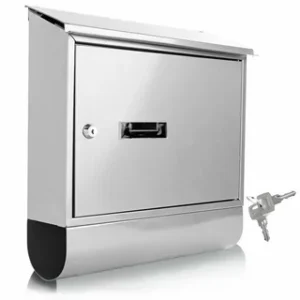
Learn easy and effective audio improvement techniques. Discover essential recording vocals tips and vocals recording tips to achieve studio-quality sound.
Whether you’re a beginner setting up a home studio or an experienced singer fine-tuning your sound, audio improvement is key to creating high-quality vocal tracks. Clean, clear vocals can make or break a song. That’s why understanding a few essential recording vocals tips and vocals recording tips can take your sound from amateur to professional.
In this blog, we’ll explore easy-to-follow tips for improving your vocal audio and achieving a polished, studio-quality result.
Why Audio Improvement Matters in Vocal Recording
When it comes to music production, audio quality is everything. Even if you’re an amazing singer, poor audio can ruin the listening experience. Issues like background noise, distortion, low volume, or harsh frequencies distract from your talent.
Good audio not only enhances your vocals but also ensures they blend well with the music. It helps listeners focus on your message and emotion, which is the real goal of any vocal performance.
Step-by-Step Tips for Better Audio and Vocal Recording
1. Choose the Right Microphone
The foundation of quality audio starts with the right mic. A condenser microphone is typically ideal for recording vocals. It captures subtle vocal nuances and has a wider frequency response. Don’t forget to use a pop filter to reduce plosive sounds like “p” and “b.”
2. Record in a Quiet Environment
Background noise is the enemy of clean vocals. Choose a quiet room and eliminate any sources of noise—like fans, air conditioners, or computer hums. If you’re recording at home, try hanging blankets or using foam panels to create a basic sound-treated area.
3. Proper Mic Placement
One of the most overlooked vocals recording tips is mic positioning. Stand about 6–8 inches away from the mic. Don’t sing too close, or you risk distortion. Angle the mic slightly off-axis to reduce harsh sibilance (the sharp “s” sounds).
4. Use a Good Audio Interface
Your mic needs to connect to your computer through an audio interface. This hardware improves the quality of your recordings by converting analog signals into digital with better clarity and less noise. It’s a crucial investment for serious audio improvement.
5. Control Room Acoustics
Even the best gear won’t help if your room sounds bad. Try to reduce echo and reverberation using basic acoustic treatment. This includes sound-absorbing panels, bass traps, and rugs. A dead-sounding room gives you better control in post-production.
Essential Recording Vocals Tips for a Smooth Session
Here are some practical recording vocals tips that can help you stay consistent during a session:
- Warm Up Your Voice: Just like athletes stretch before a workout, singers should warm up to prevent strain and improve tone.
- Stay Hydrated: Drink water before and during your session to keep your vocal cords healthy.
- Avoid Dairy and Caffeine: These can create mucus buildup and affect vocal clarity.
- Record Multiple Takes: Don’t settle for the first take. Try different emotions, tones, and deliveries. You can always comp the best parts later.
- Use Headphones Wisely: Monitor your vocals with closed-back headphones to avoid sound bleeding into the mic.
Audio Editing and Post-Processing Techniques
Improving audio doesn’t stop at recording. Here’s how to polish your vocal tracks during editing:
1. Noise Reduction
Use tools like noise gates or plugins to remove background hum and hiss. Be careful not to overdo it, as this can make vocals sound unnatural.
2. EQ (Equalization)
Cut low-end rumble (below 80 Hz), reduce muddy mid frequencies, and boost clarity around 3–5 kHz. Every voice is different, so use your ears.
3. Compression
Compression balances the dynamics of your vocal—making quiet parts louder and loud parts softer. A light touch (2:1 or 3:1 ratio) helps keep the vocal smooth and present.
4. Reverb and Delay
Add depth and space to your vocals with subtle reverb or delay. Don’t overuse them—just enough to make the vocal sit naturally in the mix.
Common Vocal Recording Mistakes to Avoid
- Overprocessing: Too much EQ, reverb, or compression can ruin a vocal track.
- Poor Monitoring: Always use quality headphones or studio monitors when tracking and mixing.
- Inconsistent Levels: Keep your recording level between -12 dB and -6 dB to avoid clipping.
- Ignoring Breath Control: Practice breathing techniques to avoid heavy breath sounds in your recordings.
Final Thoughts
Achieving great vocals starts with the right techniques and attention to detail. Whether you’re recording at home or in a studio, applying these audio improvement methods and recording vocals tips will drastically boost your sound quality.
Remember, even the best gear won’t help if you don’t use it correctly. Take the time to learn the basics, experiment, and keep improving. The right setup and smart techniques can make your voice sound like it belongs on the charts.







